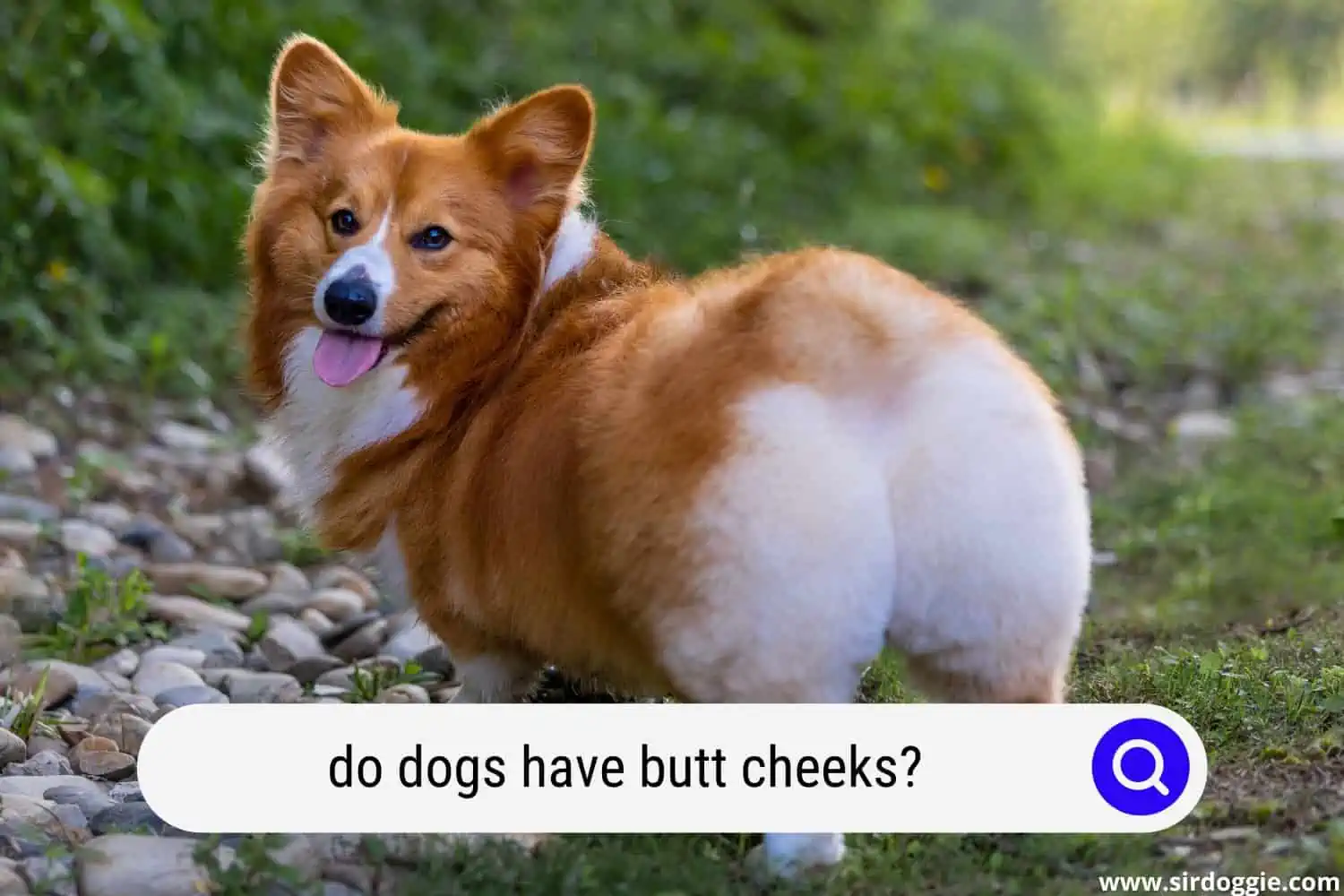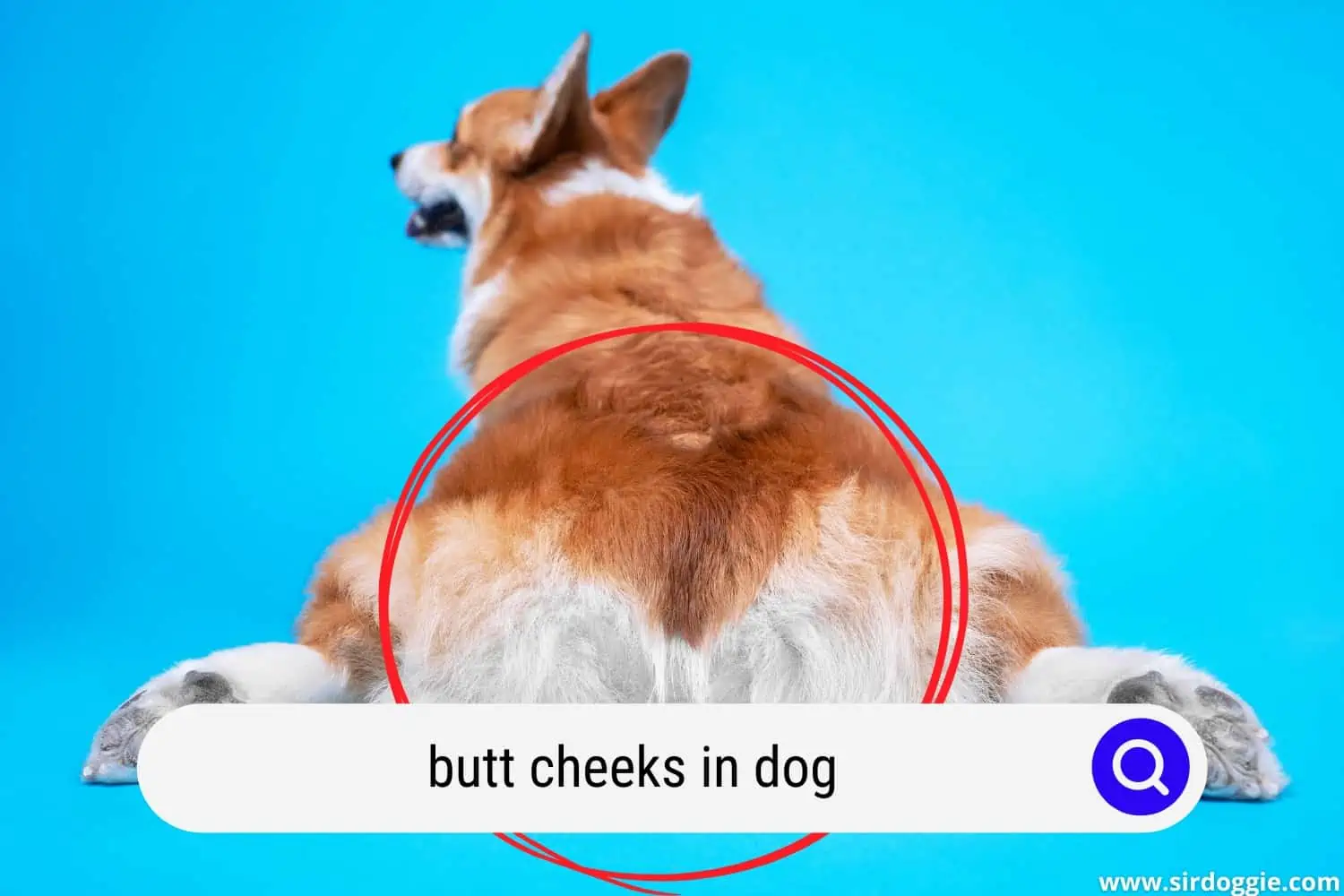Do Dogs Have Butt Cheeks? (A Detailed Explanation)
Dogs are excellent pets as well as excellent friends to have in our lives. They are essential to so many aspects of our existence and are unquestionably man’s greatest friend. You are likely quite intimately familiar with your dog in your position as a dog owner or pet parent, knowing everything about their daily routines, their preferences, and the ins and outs of their canine lives.

However, you may have found yourself in a moment of contemplation while staring at your dog, thereby leading you to wonder about a somewhat confusing and unusual yet perfectly valid question: do dogs have butt cheeks?
The answer is simple: dogs do not have butt cheeks because their hip muscles do not meet the normal criteria/description of butt cheeks in the sense that we humans are most familiar with. A dog’s leg/thigh region is devoid of the fat that is compulsory for making one have “butt cheeks.”
Lacking fatty “butt cheeks” is a natural canine adaptation, and it is pretty helpful for them when it comes to passing stool. Along with that benefit, the lack of butt cheek muscles also makes the passing of feces/poop far more hygienic and convenient for dogs since they cannot wipe clean as we do.
What Does the Term “Butt” Mean?
Most human anatomy experts define a butt as “the fleshy region of the body that extends from the rear of the hip and goes towards the back of the lower thigh region.”
Additionally, we can all agree that one’s “butt” consists of two fatty “butt cheeks” as well, with one being on each side of the rear area of one’s genitalia. Even if a person has more muscle than fat for their bottom cheeks, the location and the distinct addition of muscle or fat protruding from this region is what we all know well as a “butt.”
Related Reading: Can Dogs Eat Nutter Butters? Is It Safe?
What About Dogs?
Dogs, on the other hand, lack what we consider butt cheeks. Their rear end is a relatively flat region with the anus located directly beneath the tail and right above where their legs meet.
As bipedal mammals, our “butt cheeks” enable us to maintain an upright posture and walk with our shoulders back. Dogs do not require this collection of muscles since they do not need to stand or walk in the same manner that humans do. They are oriented differently and built to accommodate their more suitable canine body structure, and therefore they have no need for additional fat or muscle on their bottoms to serve as what we refer to as “butt cheeks.”
The Role of Rear Muscles in Canines (Despite the Lack of Butt Cheeks)
Some people think it is possible to dispute the argument that dogs don’t have butt cheeks by pointing out that they have gluteal muscles. However, this particular viewpoint on the issue is invalid.
Dogs can walk because their gluteal muscles assist them in extending and abducting their hip joints, a motion that is required for everyday mobility.
In dogs, the gluteal muscles are located in the pelvic limb area, the back of the legs, and the tops of their legs. Although humans have gluteal muscles as well, they are often covered in fat, giving us bulging “butt cheeks” that appear larger than what our necessary muscles are.
Although dogs have gluteal muscles, these muscles are not visible in the same way as on humans due to a lack of excess fat or tissue which leads to the absence of large or noticeable “butt cheeks” of any sort on a dog.
It is up to the individual as to whether they will believe that gluteal muscles qualify as a dog having butt cheeks or not; nonetheless, the gluteal muscles are hardly visible on the dog’s body by comparison to human standards.
Regardless of how fluffy a dog’s backside may be, this does not mean that this dog has butt cheeks. While dogs have gluteal muscles that are essential for their mobility, these muscles lack the usual additional tissue and fat that would make them have the “cheeks” that we commonly associate with human backsides.
If your dog appears to have a bit more “junk in the trunk” and seemingly does have butt cheeks, this may simply be due to any extra weight they are carrying, gluteal muscle growth, or possibly just them having puffier and longer fur on their backsides.
Fact: In canines, the medical term for their “butt” is “the anal region,” and the surrounding area is called the perineum.
Why Does My Dog Have a Swollen Butt?
Anal sac disease is a condition that usually leads to a canine having a swollen bum that can look like butt cheeks. It is a relatively prevalent condition in canines and appears in the form of abscesses and inflammation in the anal region and perineum.
Most of the time, the dog’s anal sacs become impacted (clogged), which is generally caused by inflammation in the ducts. The secretions trapped within the affected sacs will thicken, and the sacs will swell and become distended due to that thickening. Your dog’s feces will also be painful to pass due to this.
Why is My Dog Rubbing His Butt Against the Floor?
A dog scooting its rear end across the floor is a rather typical behavior that can indicate that they have anal sac disease or other similar troubles in this region. Your dog’s anal sacs may get clogged or even damaged in some circumstances, forcing your dog to try to find some relief from the discomfort by sliding around on its backside and anal region.
If this behavior persists or does not improve, you should visit a veterinarian to allow your dog a proper check-up. They may propose treatment and ascertain whether or not something more severe is occurring in the background as well.

If Dogs Do Not Have Butt Cheeks, Should Their Bums Still Be Wiped?
No, it is not wise to bother doing this unless your dog has excess fur due to a lack of grooming or a specific health condition that requires such hygiene practices. Due to the significant variations in human and canine anatomy, it is not recommended to wipe their backsides after they’ve conducted their post-meal business. Just as it’s recommended that we wash our hands after using the bathroom, this doesn’t apply to dogs, and neither does wiping their rear ends. Unless your dog is unwell or has gotten itself into something unusual or problematic that requires such cleaning, you should not have to wipe their rear end after they have gone potty outside.
Dogs have their hygiene systems that enable them to remain clean after defecation even without being cleaned by their owner or pet parent!
Feces elimination is significantly easier for dogs since they don’t have any butt cheeks to worry about. When they need to go to the bathroom, their sphincter contracts and keeps the process simple and hygienic, thereby assisting them in maintaining a clean behind. The absence of butt cheeks ensures that nothing is caught or smeared along the feces’ route to the grass below.
If all goes according to plan, your dog should be completely void of any mishaps. Occasionally, something may become lodged or matted in their fur, necessitating the use of dog-safe wipes or a bath to assist them in cleaning themselves. This typically applies to older dogs or those with heavy, long, or thicker coats. However, proper grooming in the rear region will make sure your pup stays clean after their daily poo session without fail.
Related Reading: 15 Big Fluffy Dog Breeds That Are Irresistible (With Pictures)

Family Dog Expert Author
Hi there! I’m Stuart, a devoted dog lover and family dog expert with over a decade of experience working with our furry companions. My passion for dogs drives me to share my knowledge and expertise, helping families build strong, loving bonds with their four-legged friends. When I’m not writing for SirDoggie, you’ll find me hiking, playing with my beautiful dog, or studying music.